The marketing world loves to talk about branding.
Take a look at just about any marketing company in the world, and you’ll find the word “brand” on at least one page.
Startups and small companies frequently look for ways to get mentions online so they can start building their brands.
And big companies often preach branding, too.
You’ll see blog posts on “improving your brand” or something similar.
And you’ll often read news stories about how a particular brand is “valued” at a certain figure.
A recent example of this would be the digital communication giant Slack. Some have recently valued Slack as a $5 billion brand.
But when you get down to the brass tacks, does branding really have anything to do with, well, anything?
More specifically, does a brand actually correlate to sales, especially for B2B players?
This is a question that companies all over the world are discussing that needs an answer.
I want to show you what the data says about branding, sales, and how it affects you.
To get started, you first have to understand how brand loyalty and value have changed.
Then, I’ll show you ways to dig deeper into each.
The basics of brand bias
Branding is, in effect, a method of creating an image around your company, product, or service.
You’re probably familiar with many multi-billion dollar brands that have anchored themselves in your life.
You do everything you can to establish your brand, and that’s not necessarily a bad thing.
But is there data to back up this information?
And if so, what elements of branding are the most important to consider for B2B players who want to wisely join the trend?
Branding is considered conventional wisdom so these questions are often taken for granted.
I think that trend should change, so I’ve compiled a list of some of the vital elements of branding. This will help us determine whether you actually can prove ROI with them.
But before we get to those, you have to know a bit about the details of brand bias.
You’ll also hear marketers call it brand loyalty. The terms are pretty much synonymous.
Brand loyalty goes way back in our history.
Without a doubt, you could ask your grandparents about the brands they were loyal to in their youth, and they could give you an extensive list with ease.
These relationships had the staying power many companies only dream about today.
But how has brand loyalty progressed to modern times?
Despite claims that brand loyalty is dead, the truth is that the bias is still overpowering in B2C arenas. In fact, 82% of adults in the US claim loyalty to a product brand.
And the translation to B2B here is only natural.
Those same brand-loyal people are likely to be amongst the decision-makers of your clientele in the B2B world.
They want to find a brand to be loyal to. It’s a mental shorthand that looks to make decisions easier and faster.
So the biggest overall change in loyalty isn’t that it’s dying. It’s that buyers are in the driver’s seat instead of brands. They now have the power to research brands carefully.
But while the information available to your clients has grown, most industries show a relatively slow rate of growth in revenue compared to the astronomical rise of website traffic.
This trend might be eerily familiar to you. It’s likely that you’re seeing indications that the clients you’re trying to win are probing your brand and going elsewhere.
And you can bet that your target audience is doing extensive research on your brand before coming to a decision.

So at the very least, it’s clear that loyalty has changed.
And this makes sense. When you change your customer’s reality, you have to change the marketing reality with it.
The traditional brand elements like name recognition and being “top of mind” don’t pack the same punch anymore.
The result is that we need to turn more toward metrics like sales, ROI, and conversions to find an accurate measure of brand bias.
So let’s address this issue of “brand value.”
What does that mean?
This is another concept that people worldwide throw around, but the lines have become hazy.
As you would expect, because of the evolution we’ve seen in brand bias, there is an ongoing discussion of whether brand value is a monetary assessment of the company or a softer assessment of value delivered to your audience.
The former approach treats all marketing efforts as “branding” and calculates ROI based on this value.
Thus, a simple revenue-to-cost analysis provides ROI.
And unfortunately, the later causes many businesses to ignore their brand value altogether because it makes value hard to measure and puts it in a constant state of change.
The overriding principle that both tend to miss, however, is that a strong brand or “high brand value” can solve many common problems before they occur.
Therefore, linking brand value to ROI is a matter of showing a causal relationship between strong branding and the elimination of issues that can impact sales.
This requires us to look at the hard measurements that data gives us and tap into what we know of human behavior.
So now that you see the dilemma that faces marketers seeking to prove branding ROI, let’s take a look at how various sales-related data points link back to branding.
We’ll start, of course, with your biggest client.
Your brand may be the only thing keeping your biggest client
This is a pretty frightening claim, and you should be a little scared of it if you’re a B2B company.
Recently, Gallup found that 71% of B2B customers are actively considering taking their business to a different company.
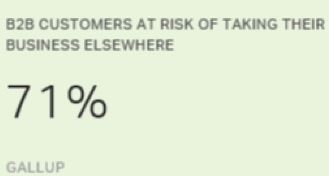
That’s a staggering statistic.
But how could that be?
B2B companies should be best equipped to meet their audience’s needs, which makes a statistic like this seem out of place.
But think about the reality of the situation.
B2B companies frequently make enormous promises to their clients.
Even if they’re equipped to follow through, they set the bar high from the beginning.
And your problems compound when you remember the fact that bigger client companies have greater bargaining power.
You begin to ask, “what happens if we delay one deadline?” Suddenly, money starts to tighten in negotiations.
Tack on the ever-looming fact that poor economic growth mixed with other factors can slow success and force brands to adjust post-contract, and you have a recipe for disaster.
Even more pessimistically, only about half of B2B customers believe their vendor is delivering on their promises or feel proud to associate with that brand.
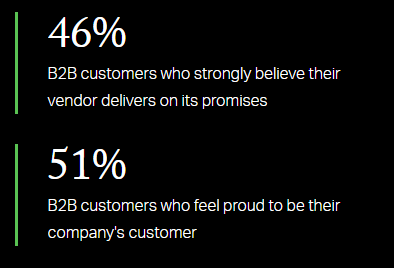
Those are pretty dismal numbers when you think about it.
And this is given greater context by the fact that 81% of consumers are satisfied with the service of B2C companies.
What are B2B companies missing?
For one, B2B companies have been slow to respond from the traditional PR-dominated branding to a now marketing-dominated branding.
The best practice used to be leaving your image in the hands of your PR team.
But with the rise in consumer research we talked about earlier, this trend is now damaging companies that are still opting for the old school.
The room for growth is astronomical, and B2B companies that fail to focus on their brand and market it effectively are essentially neglecting their future and their clients.
Your name, reputation, or brand could be the only factors preventing your clientele from leaving you.
Or worse, it could be what’s driving them to look for other options.
Brand loyalty improves engagement and customer acquisition
One of the biggest data points that links branding to B2B sales is customer acquisition.
If it’s possible to use your brand as a tool to help you gain clients, then it’s a logical conclusion that focusing on your brand can improve your marketing ROI.
And from the data I’ve compiled, there’s a compelling case that branding can indeed help improve customer acquisition.
Let’s start with the bad news.
Engagement levels for B2B customers are abysmal according to Gallup, coming in at only 29%.
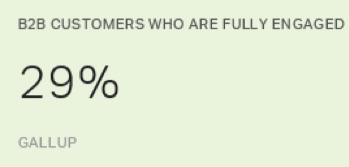
This might be a curious statistic to start off with, but there’s good reason for it.
The main reason I share this fact is because fully-engaged customers share more and are better brand advocates.
In other words, brand bias and customer engagement are directly correlated.
And it’s a basic marketing principle that loyal customers refer business.
More than half of consumers who have a good experience with a brand will recommend it to people that they know.
And many of those referrals turn into loyal customers themselves.
So, that 29% of engaged B2B clients isn’t making a very big ripple when it comes to referral business.
When you consider that the remaining 71% of your clients could be referring you and aren’t, you start to see how important these numbers are.
And this picture gets a little grimmer when you take into account that two-thirds of touchpoints when a client is actively considering to do business with you come in the form of word-of-mouth or online reviews.
That means your leads, audience, and potential clients are neglecting your trained sales team to see what others have to say about your brand.
And in 2016, 62% of B2B buyers were relying more on peer recommendations than on their own research.
In the technology industry alone, 60% of buyers look for peer-to-peer reviews to aid their decision-making process.
And the majority of your clients don’t care enough to share simply because they aren’t engaged with your brand.
Imagine what could happen if you increase your customer engagement.
You’d see much more growth.
And this concept is backed by data too.
49% of B2B companies report higher ROI by investing in relationships instead of acquisition marketing.
That translates well based on all of the other data we’ve been looking at.
By improving their current level of engagement with existing customers, their ROI increases.
And that is branding – pure and simple.
Branding motivates action
There’s another question we want to answer:
Does content (and ultimately branding) truly push your digital audience to take actions that lead to sales?
First, I think it’s worth showing you how actions, content, and branding share an inherent relationship.
One way to look at branding is in relation to the actions that your leads, customers, or website visitors take.
These actions are ultimately intended to culminate in a sale.
Marketers usually call this entire action-oriented process the buyer’s journey.
And as you can see, the B2B buyer’s journey is fraught with complexity.
Branding gives definition to your buyer’s journey primarily through the content you create and share.
The general consensus among marketers is that content motivates action among your audience.
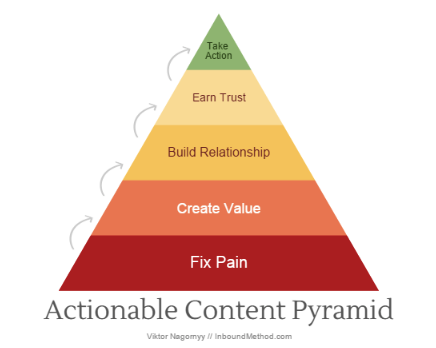
By moving through this process of fixing pain points, offering value, building a relationship, and earning trust, your content is reportedly building your brand and promoting further action.
That means that the role of content marketing is social brand building.
So, by providing the right content, the strategy is to push leads to an action and create a custom buyer’s journey that increases sales.
That
source https://blog.kissmetrics.com/does-branding-drive-sales/
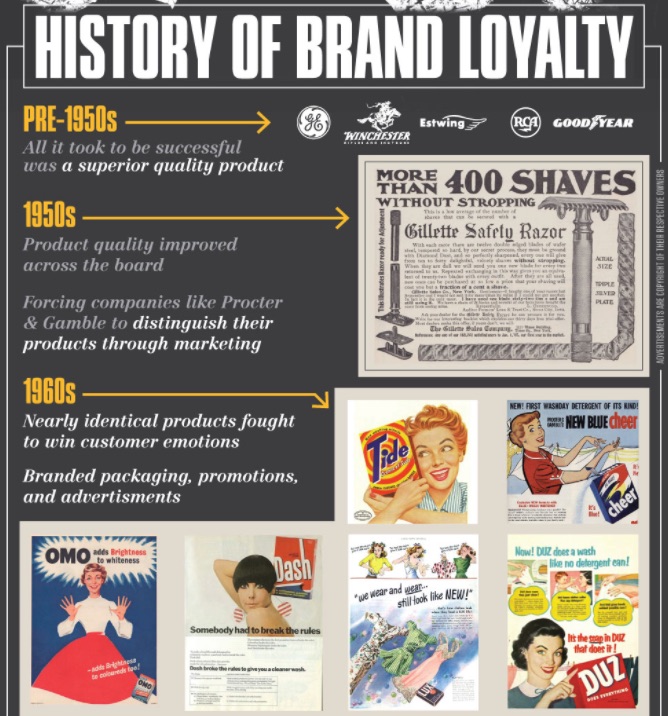
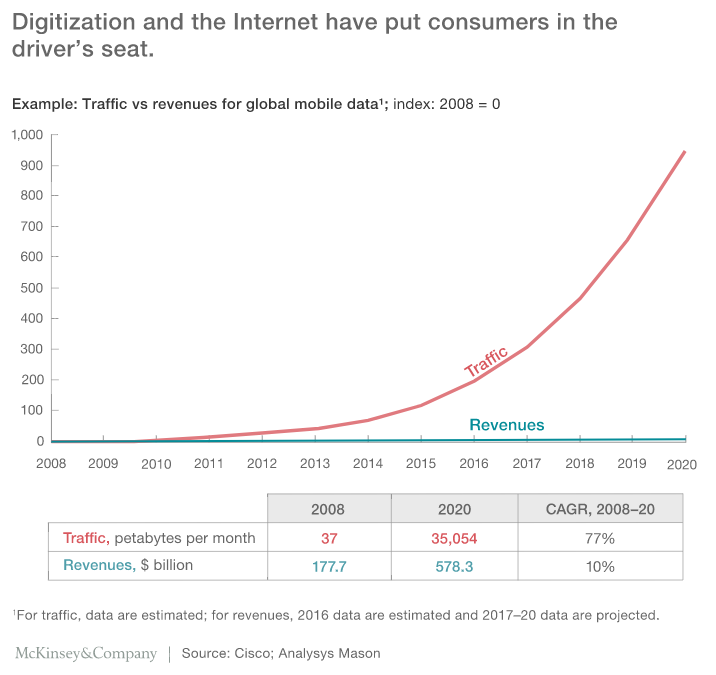
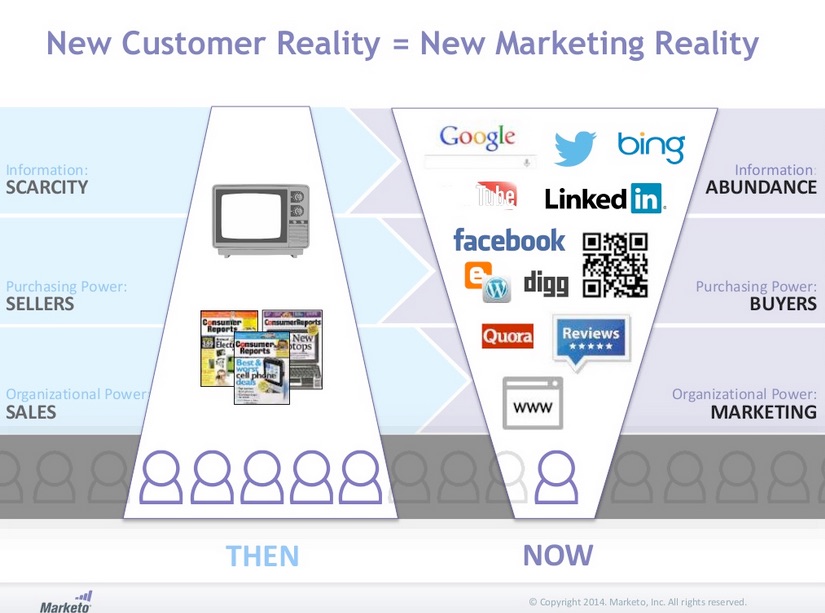
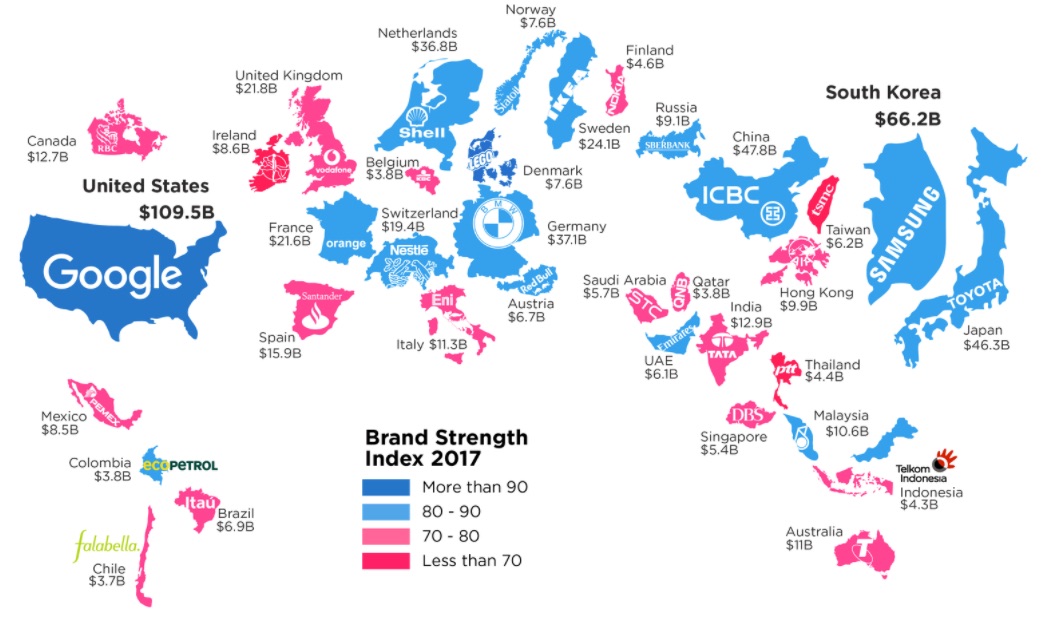
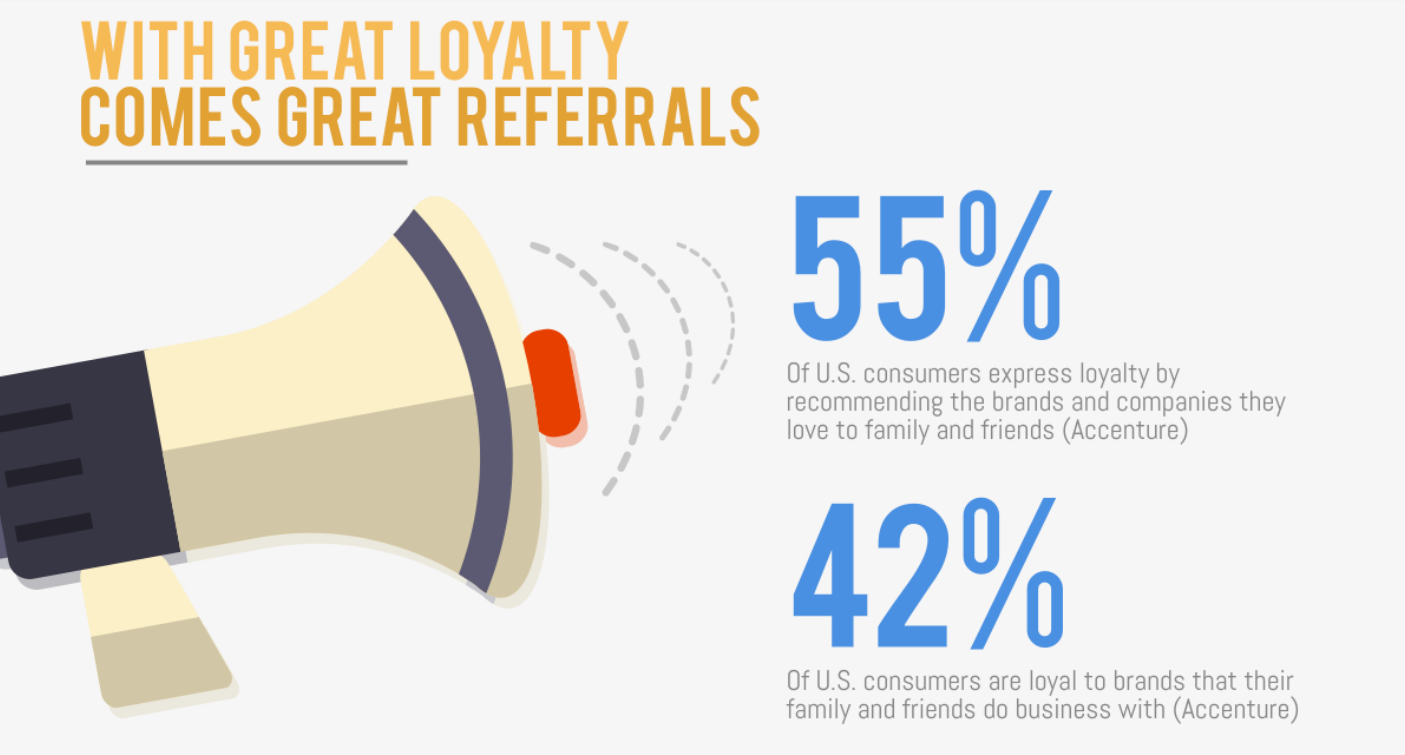
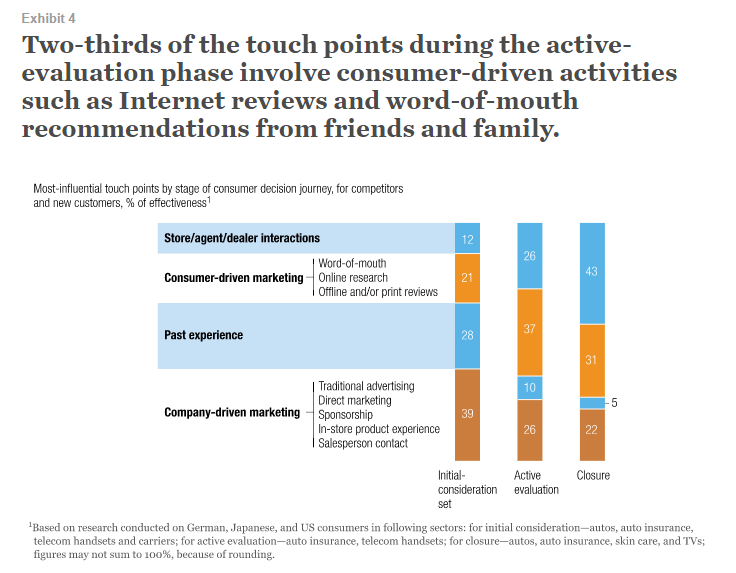
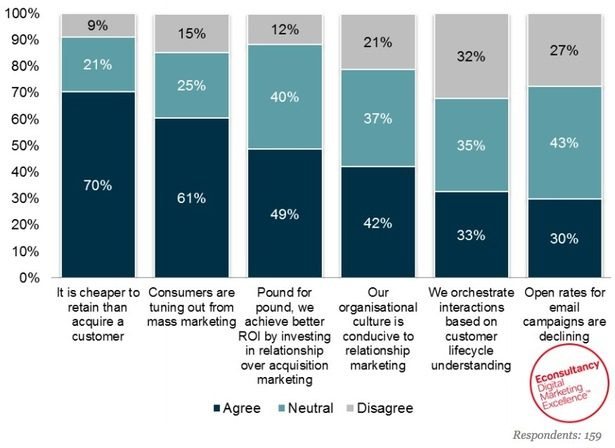
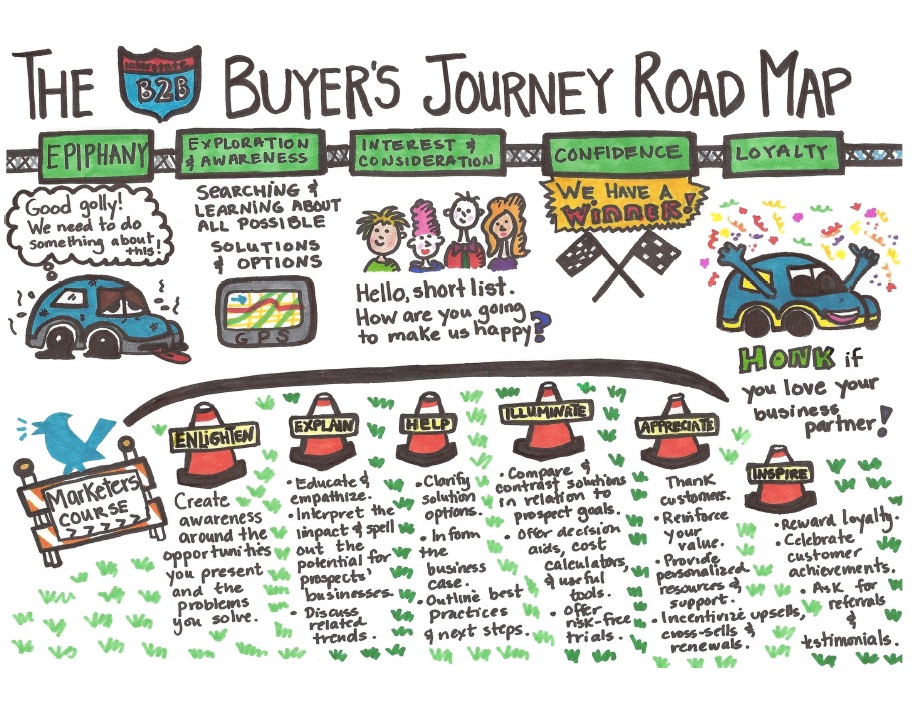
No comments:
Post a Comment